Riau
Riau
 Riau is a province of Indonesia. It is located in the central eastern coast of Sumatra along the Strait of Malacca. Until 2004 the province included the offshore Riau Islands, a large group of small islands (of which the principal islands are Batam and Bintan) located east of Sumatra Island and south of Singapore, before these islands were split off as a province in July 2004. The provincial capital and the largest city of Riau is Pekanbaru.
The province shares land borders with North Sumatra to the northwest, West Sumatra to the west, and Jambi to the south. The total area for Riau province is 87,023.66 square kilometres (33,600.02 sq mi), which stretches from the slopes of the Bukit Barisan to the Strait of Malacca. Riau has a wet tropical climate with average rainfall ranging between 2000 and 3000 millimeters per year, and the average rainfall per year is about 160 days. Riau is currently one of the richest provinces in Indonesia and is rich in natural resources, particularly petroleum, natural gas, rubber, palm oil and fibre plantations.
Riau is a province of Indonesia. It is located in the central eastern coast of Sumatra along the Strait of Malacca. Until 2004 the province included the offshore Riau Islands, a large group of small islands (of which the principal islands are Batam and Bintan) located east of Sumatra Island and south of Singapore, before these islands were split off as a province in July 2004. The provincial capital and the largest city of Riau is Pekanbaru.
The province shares land borders with North Sumatra to the northwest, West Sumatra to the west, and Jambi to the south. The total area for Riau province is 87,023.66 square kilometres (33,600.02 sq mi), which stretches from the slopes of the Bukit Barisan to the Strait of Malacca. Riau has a wet tropical climate with average rainfall ranging between 2000 and 3000 millimeters per year, and the average rainfall per year is about 160 days. Riau is currently one of the richest provinces in Indonesia and is rich in natural resources, particularly petroleum, natural gas, rubber, palm oil and fibre plantations. Riau is considered part of the Malay world. It is currently considered as the cultural center of the Malays in Indonesia. Nevertheless, Riau is considered a very diverse province, as it is inhabited by many ethnic groups, such as Malay, Minangkabau, Chinese and Batak. The local Riau dialect of Malay is considered as the lingua franca in the province, but Indonesian, the standardized form of Malay is used as the official language and also as the second language of many people. Other than that, different languages such as Minangkabau, Hokkien and varieties of Batak languages are also spoken.
Riau allegedly has been inhabited since the period between 40,000 and 10,000 BC. Between 5th to 12th century AD, traders and merchants from the Indian subcontinent visited the region to trade with the local people, spreading Hinduism and Buddhism in the process. Therefore, Riau was under the control of several Hindu-Buddhist kingdoms such as the Melayu Kingdom and the Srivijaya Empire. In the 14th century, Muslim traders from India and the Arabian Peninsula visited the region, beginning the spread of Islam in the region. By the end of the 14th century, Hindu and Buddhist influence are waning, while Islam influence are growing, leading to the dissolution of many Hindu-Buddhist Kingdoms in Riau. Those kingdoms who still existed transformed itself into an Islamic Sultanates.
By the 16th century, there are three great Malay sultanates in the region, namely the Siak Sri Indrapura Sultanate, Indragiri Sultanates and the Johor Sultanate, the latter which would split in the 19th century into the modern Johor Sultanate in the Malay peninsula and the Riau-Lingga Sultanate in the Riau Archipelago. However, by that time Europeans began frequenting the region. first the Portuguese, then the Dutch and the British. In 1824, the Dutch and British agreed to divide the sphere of influence in the region, with the Malay peninsula falling under the British and Sumatra falling under the Dutch. Soon afterwards, the power of the sultanates in the region began to wane. The sultanates soon became protectorate of the Dutch and was reduced to nothing but a puppet states of the Dutch East Indies, with the Dutch having the authority to intervene in everyday affairs.
This occurred until 1942, when the Japanese invaded and occupied Riau during the Pacific theater of World War II. After three years of occupation which was marked by atrocities and war crimes, the Japanese surrendered in 1945. The Dutch soon returned to assume control of the region, but left in 1949 after the Dutch–Indonesian Round Table Conference, in which the Dutch agreed to transfer sovereignty of the Dutch East Indies to the Republic of Indonesia. Since then, Riau has been part of the unitary state of Indonesia.
Since the 1970s, much of Indonesia has experienced a decline in population growth rates. Riau has been a significant exception, with increasing rates every decade since 1970 to a 4.35 percent annual rise for the 1990s; however, this rate slowed significantly during the subsequent decade. The provincial population was 5,538,367 at the 2010 census and 6,494,087 at the 2020 Census.
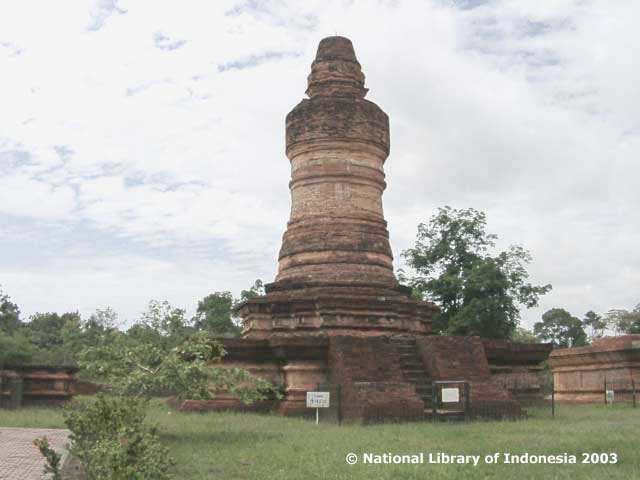 Independence and contemporary era
Independence and contemporary era
At the beginning of Indonesia’s independence, the former Riau Residency area was merged and incorporated in the Sumatra Province based in Bukittinggi. Along with the crackdown on PRRI sympathizers, Central Sumatra was further divided into three provinces, namely North Sumatra, Central Sumatra, and South Sumatra. At that time, Central Sumatra became the strongest base of the PRRI, this situation caused the central government to develop a strategy to break Central Sumatra in order to weaken the PRRI movement.
Subsequently, in 1957, based on Emergency Law Number 19 of 1957, Central Sumatra was divided into three provinces, namely Riau, Jambi and West Sumatra. Then what became the newly formed Riau province is the former Siak Sri Sultanate area of Inderapura and Riau Residency as well as the Kampar which was previously occupied during the occupation of the Japanese army in the Rhio Shu area.
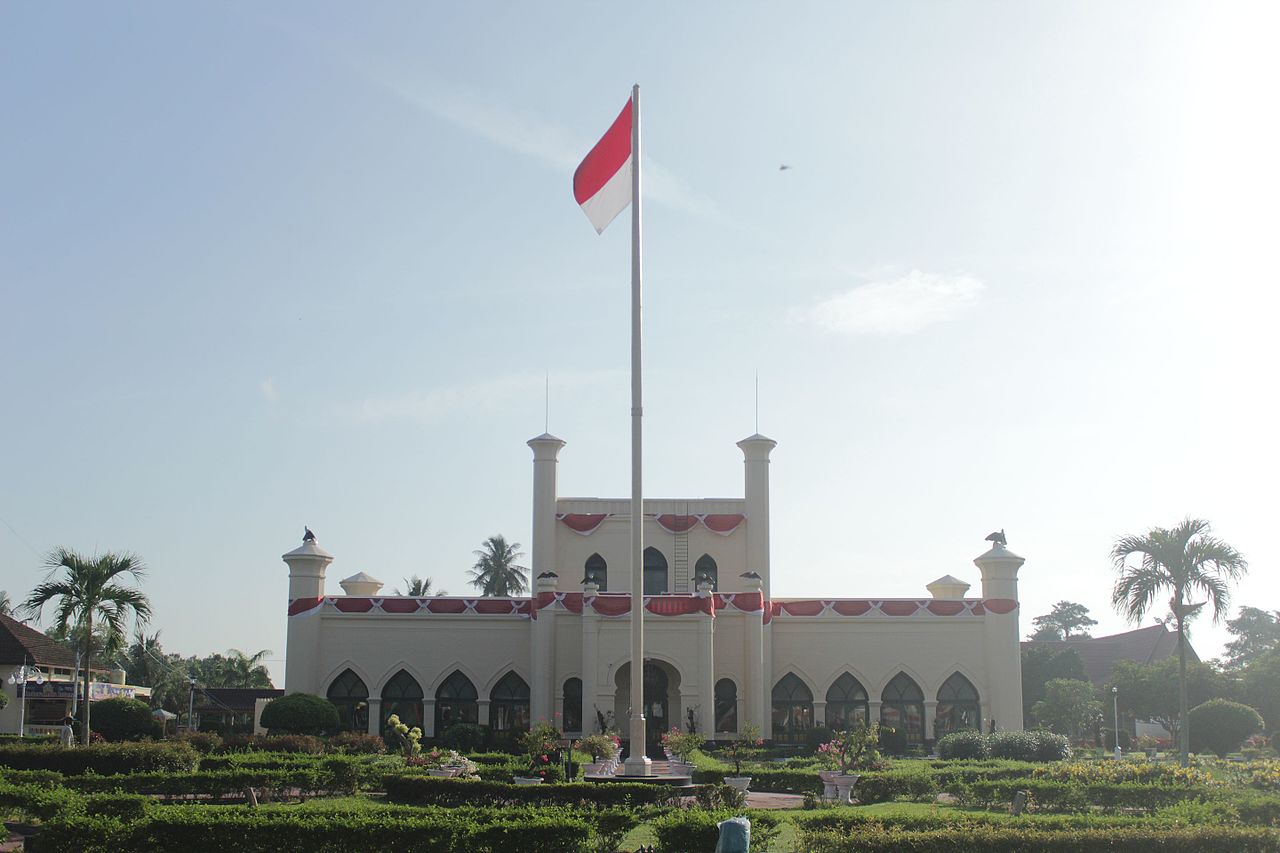 Riau had become one of the areas influenced by the Revolutionary Government of the Republic of Indonesia in the late 1950s. The central government held Operation Tegas under the leadership of Kaharuddin Nasution, who later became governor of the province, and succeeded in quelling the remnants of PRRI sympathizers.
Riau had become one of the areas influenced by the Revolutionary Government of the Republic of Indonesia in the late 1950s. The central government held Operation Tegas under the leadership of Kaharuddin Nasution, who later became governor of the province, and succeeded in quelling the remnants of PRRI sympathizers.
After the security situation gradually recovered, the central government began to consider moving the provincial capital from Tanjung Pinang to Pekanbaru, which is geographically located in the middle part of the province. The government finally established Pekanbaru as the new provincial capital on 20 January 1959 through Kepmendagri No. December 52 / I / 44–25.
After the fall of the Old Order, Riau became one of the pillars of the New Order’s economic development which was stretched back. In 1944, NPPM geologist Richard H. Hopper and Toru Oki and their team discovered the largest oil well in Southeast Asia, namely in Minas, Siak. This well was originally named Minas No. 1. Minas is famous for its Sumatra Light Crude (SLC) oil which is good and has low sulfur content.
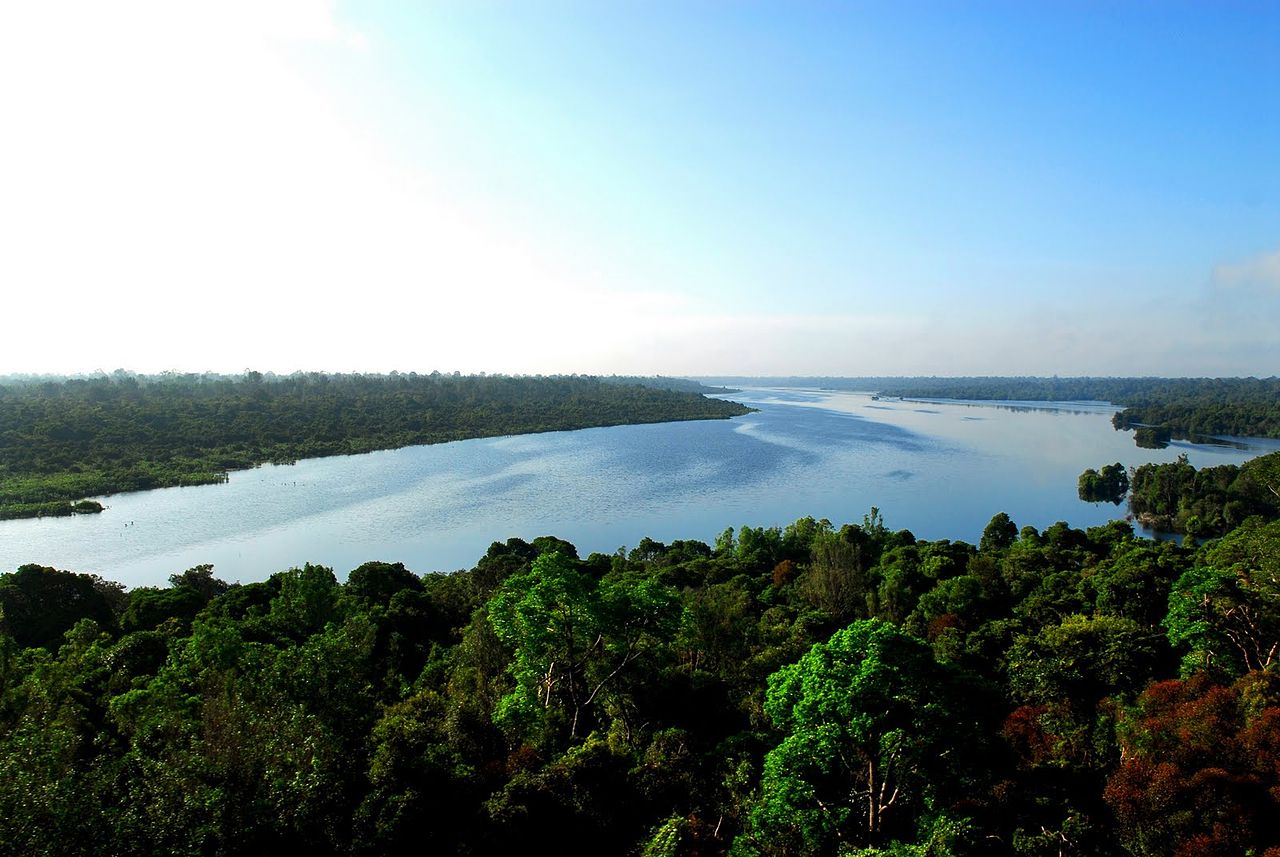 In the early 1950s, new oil wells were found in Minas, Duri, Bengkalis, Pantaicermin, and Petapahan. Petroleum exploitation in Riau began in the Siak Block in September 1963, with the signing of a work contract with PT California Texas Indonesia (now Chevron Pacific Indonesia). This province had been relied upon as a contributor to 70 percent of Indonesia’s oil production in the 1970s.
In the early 1950s, new oil wells were found in Minas, Duri, Bengkalis, Pantaicermin, and Petapahan. Petroleum exploitation in Riau began in the Siak Block in September 1963, with the signing of a work contract with PT California Texas Indonesia (now Chevron Pacific Indonesia). This province had been relied upon as a contributor to 70 percent of Indonesia’s oil production in the 1970s.
Riau was also the main destination for the transmigration program launched by the Suharto administration. Many families from Java have moved to newly opened oil palm plantations in Riau, thus forming a separate community which is now quite significant.
In 1999, Saleh Djasit was elected as the second native Riaunese (besides Arifin Achmad) and first elected by the Provincial House of Representatives as governor. In 2003, former Regent of Indragiri Hilir, Rusli Zainal, was elected governor, and was re-elected through direct elections by the people in 2008. Starting on 19 February 2014, Riau Province was officially led by the governor, Annas Maamun. Just leading 7 months, Annas Maamun was deposed after the Corruption Eradication Commission (KPK) arrested Annas Maamun’s hand in a case of land use change in Kuantan Singingi Regency.
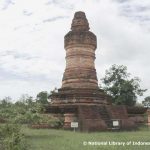
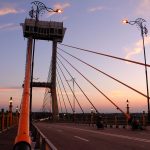
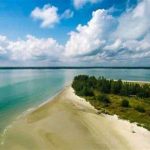
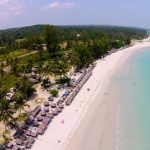
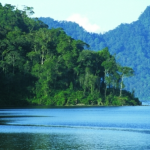
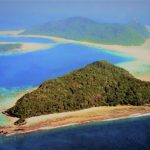














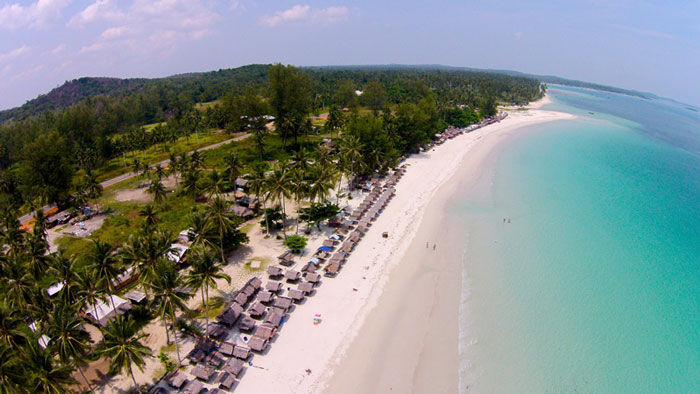 Geography
Geography
Geographically, Riau which has thousands of cities in Pekanbaru is located at position 02 ° 25 ‘LU-01 ° 15 ° LS and 100 ° 03′-104 ° 00’ BT. The area is quite extensive and is located in the central part of Sumatra. Riau is directly adjacent to North Sumatra and the Straits of Malacca in the north, Jambi to the south, West Sumatra to the west and the Riau Islands in the east. The province shares maritime borders with Singapore and Malaysia.
In general, the geography of Riau consists of mountains, lowlands, and islands. The mountain area lies in the western part, namely the Bukit Barisan Mountains, near the border of West Sumatra. The elevation decreases towards the east, making most of the central and eastern part of the province covered with lowlands. Off the eastern coast lies the Strait of Malacca where several island lies.
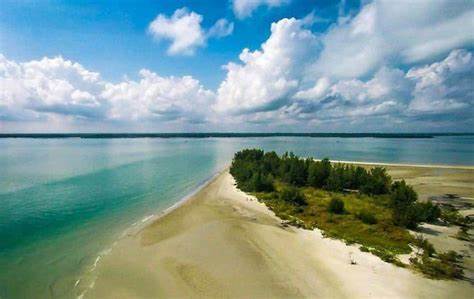 Climate
Climate
In general, Riau Province has a wet tropical climate that is influenced by two seasons, namely the rainy and dry seasons. The average rainfall received by Riau Province is between 2,000 – 3,000 mm / year with an average annual rainfall of 160 days. The areas that received the most rain were Rokan Hulu Regency and Pekanbaru City. Meanwhile, the area that received the least rainfall was Siak Regency.
The average air temperature of Riau is 25.9 °C with maximum temperatures reaching 34.4 °C and minimum temperatures reach 20.1 °C. The highest temperature occurs in urban areas on the coast. On the contrary, the lowest temperature covers the high mountains and mountains. Air humidity can reach an average of 75%. Slightly different for the island region in the eastern region is also influenced by the characteristics of the sea climate.
As in most other province of Indonesia, Riau has a tropical rainforest climate (Köppen climate classification Af) bordering on a tropical monsoon climate. The climate is very much dictated by the surrounding sea and the prevailing wind system. It has high average temperature and high average rainfall.
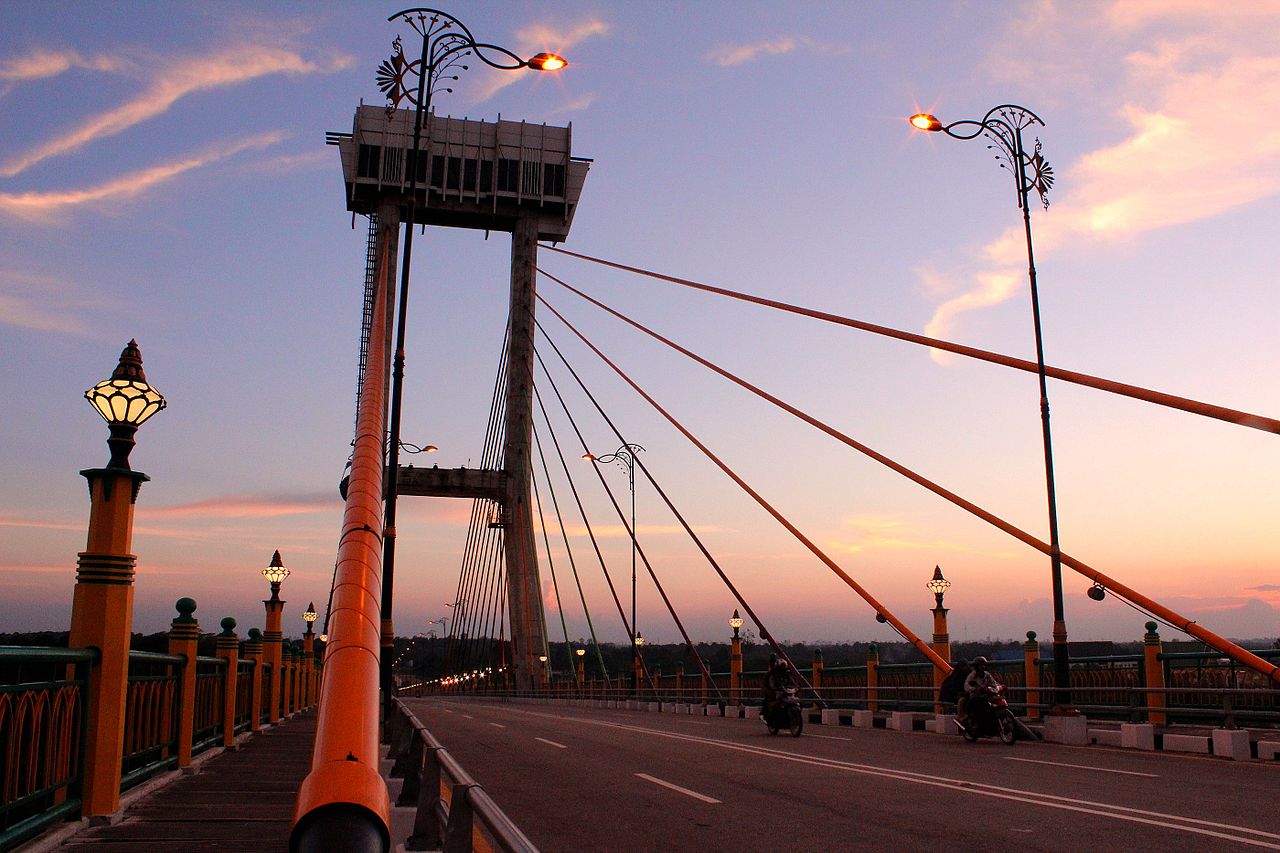 Ecology
Ecology
Giam Siak Kecil – Bukit Batu Biosphere Reserve, Indonesia, is a peatland area in Sumatra featuring sustainable timber production and two wildlife reserves, which are home to the Sumatran tiger, Sumatran elephant, Malayan tapir, and Malayan sun bear. Research activities in the biosphere include the monitoring of flagship species and in-depth study on peatland ecology. Initial studies indicate a real potential for sustainable economic development using native flora and fauna for the economic benefit of local inhabitants.
Cagar Biosfer Giam Siak Kecil Bukit Batu (CB-GSK-BB) is one of seven Biosphere Reserves in Indonesia. They are located in two areas of Riau Province, Bengkalis and Siak. CB-GSK-BB is a trial presented by Riau at the 21st Session of the International Coordinating Council of Man and the Biosphere (UNESCO) in Jeju, South Korea, on 26 May 2009. CB-GSK-BB is one of 22 proposed locations in 17 countries accepted as reserves for the year. A Biosphere Reserve is the only internationally recognised concept of environmental conservation and cultivation. Thus the supervision and development of CB-GSK-BB is a worldwide concern at a regional level.
CB-GSK-BB is a unique type of Peat Swamp Forest in the Kampar Peninsula Peat Forest (with a small area of swamp). Another peculiarity is that the CB-GSK-BB was initiated by private parties in co-operation with the government through BBKSDA (The Center for the Conservation of Natural Resources), including the notorious conglomerate involved in forest destruction, Sinar Mas Group, owning the largest paper and pulp company in Indonesia.
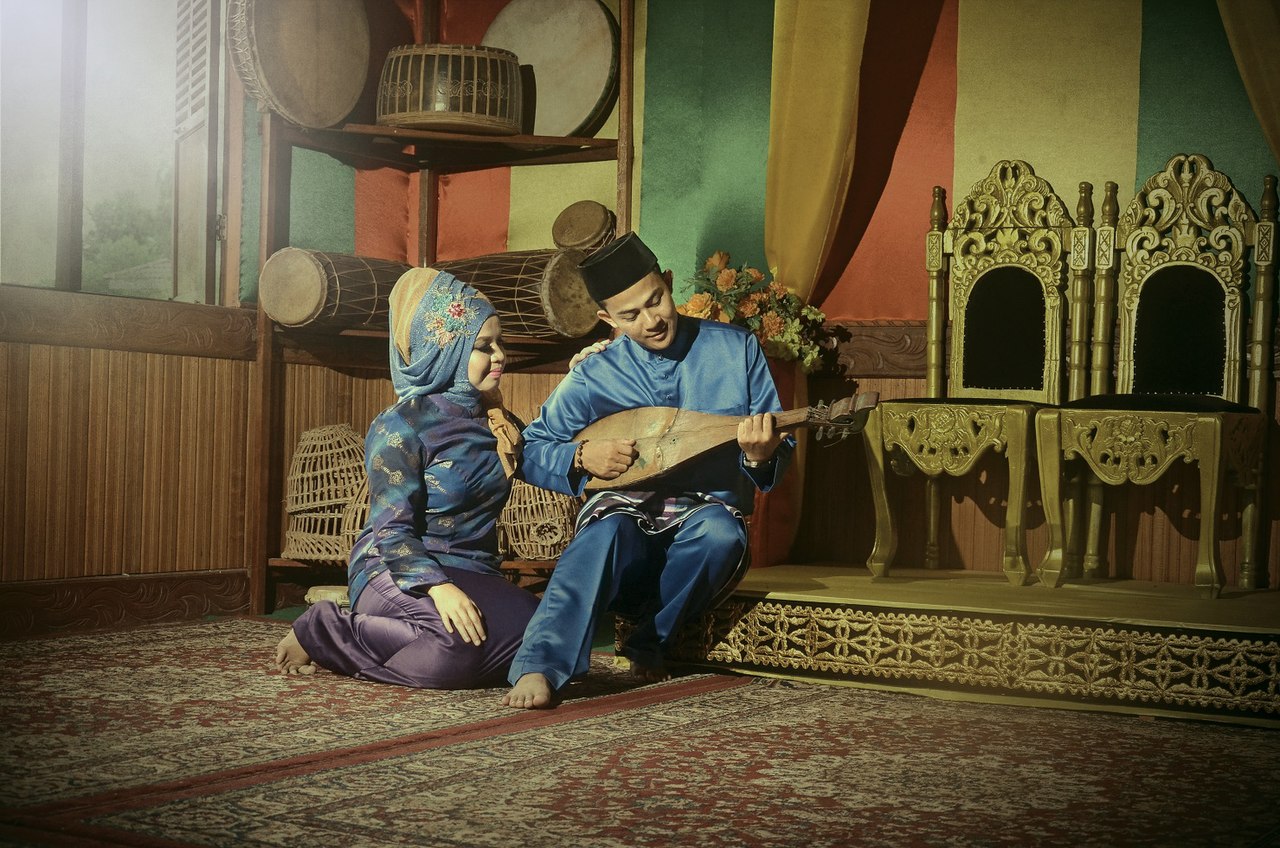 Demographics
Demographics
The total population of Riau spread in 12 regencies/cities as of June 2016 reached 5,921,987 people consisting of 3,053,043 male inhabitants and 2,868,944 female inhabitants. Based from the population per regency/city, the largest population was in Pekanbaru City with 441,554 male population and 428,477 female, while the smallest population was in the Kepulauan Meranti Regency where 106,269 people were male and 98,700 were female. When viewed from the two regencies/cities which have the largest and smallest population in Riau Province, the comparison of many male population is more dominant than the female population.
Ethnic groups
Riau is considered a very ethnically diverse province. As of 2015, the ethnic groups in Riau consist of Malays (37.74%), Javanese (25.05%), Minangkabau (11.26%), Batak (7.31%), Banjar (3.78%), Chinese (3.72%), and Bugis (2.27%). The Malays are the largest ethnic group with a composition of 37.74% of the entire population of Riau. They generally come from coastal areas in Rokan Hilir, Dumai, Bengkalis, Pulau Meranti, up to Pelalawan, Siak, Inderagiri Hulu and Inderagiri Hilir. Riau was once the seat of great Malay sultanates, such as the Sultanate of Siak Sri Indrapura, the Pelalawan Sultanate and the Indragiri Sultanate.
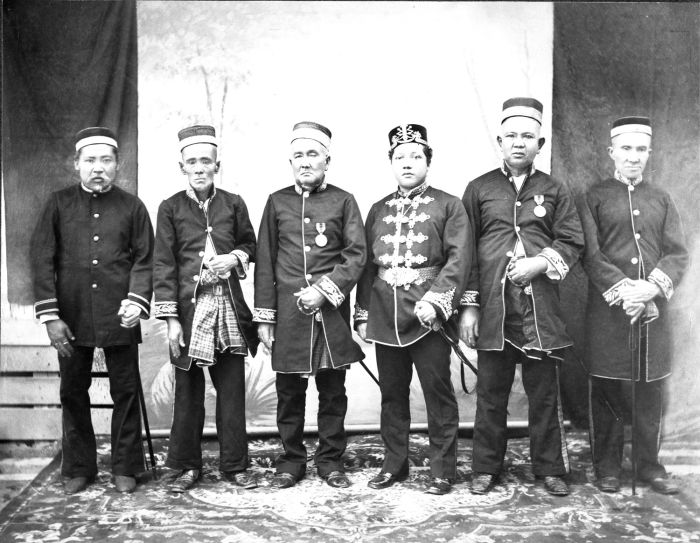 There is also a sizable population Minangkabau people living in Riau, mostly in the areas bordering West Sumatra, such as Rokan Hulu, Kampar, Kuantan Singingi, and part of Inderagiri Hulu. Pekanbaru, the capital of Riau, has a Minangkabau majority, since it was once one of the Minangkabau rantau (migration) area. Many Minang in Pekanbaru have lived there for generations and has since assimilated into the Malay community. Most Minang in Riau generally work as merchants and live in urban areas such as Pekanbaru, Bangkinang, Duri, and Dumai.
There is also a sizable population Minangkabau people living in Riau, mostly in the areas bordering West Sumatra, such as Rokan Hulu, Kampar, Kuantan Singingi, and part of Inderagiri Hulu. Pekanbaru, the capital of Riau, has a Minangkabau majority, since it was once one of the Minangkabau rantau (migration) area. Many Minang in Pekanbaru have lived there for generations and has since assimilated into the Malay community. Most Minang in Riau generally work as merchants and live in urban areas such as Pekanbaru, Bangkinang, Duri, and Dumai.
There are many other ethnic groups migrating from other province of Indonesia, such as the Batak Mandailing people who mostly lives in areas bordering North Sumatra such as Rokan Hulu. Most of the Mandailing people now identify themselves as Malay rather than as Minangkabau or Batak. In the 19th century, the Banjarese of South Kalimantan and the Bugis of South Sulawesi also began arriving in Riau to seek better lives. Most of them settled in the Indragiri Hilir areas, especially around Tembilahan. The opening of Caltex oil mining company in the 1940s in Rumbai, encouraged people from throughout the country to migrate to Riau.
 There are sizeable Javanese and Sundanese population in Riau. Javanese forms the second-largest ethnic group in the province, forming 25.05% of the total population. Most of them migrated to Riau due to the transmigration program dating from the Dutch East Indies and continued during the Soeharto administration. The majority of them lives in transmigration communities spread throughout the region.
There are sizeable Javanese and Sundanese population in Riau. Javanese forms the second-largest ethnic group in the province, forming 25.05% of the total population. Most of them migrated to Riau due to the transmigration program dating from the Dutch East Indies and continued during the Soeharto administration. The majority of them lives in transmigration communities spread throughout the region.
Likewise, the Chinese people are generally similar to the Minangkabau as many of them also work as merchants. Many Riau Chinese lives in the capital Pekanbaru, and many can also found in coastal areas in the east such as Bagansiapiapi, Selatpanjang, Rupat and Bengkalis. Most of the Chinese people in Riau are Hoklo people, whose ancestors migrated from Quanzhou in modern-day Fujian from the early 19th-century to the mid 20th-century. Some of the Riau Chinese has migrated to other parts of Indonesia, such as Medan and Jakarta, to seek better life opportunities, while some have also migrated to other countries such as Singapore and Taiwan.
There are also some groups of indigenous people who live in rural areas and riverbanks, such as the Sakai, Akit, Talang Mamak and Orang Laut. Some of them still leading the nomadic and Hunter-gatherer lifestyle in the remote interior of Riau, while most settled into major cities and towns in with the rise of industrialization.

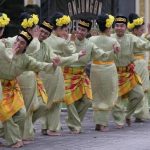

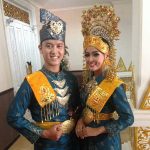
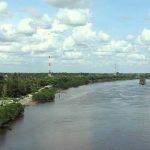
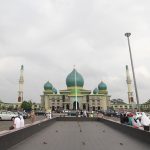
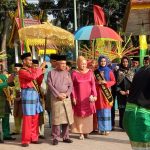
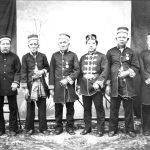












 Language
Language
The people of Riau generally uses the local dialect of Malay and Indonesian, the official language of Indonesia. Malay is commonly used in coastal areas such as Rokan Hilir, Bengkalis, Dumai, Pelalawan, Siak, Indragiri Hulu, Indragiri Hilir and around the islands off the coast of Riau.
The dialect of Malay spoken in Riau is considered by linguists to have one of the least complex grammars among the languages of the world, apart from creoles, possessing neither noun declensions, temporal distinctions, subject/object distinctions, nor singular/plural distinction. For example, the phrase Ayam makan (lit. ‘chicken eat’) can mean, in context, anything from ‘the chicken is eating’, to ‘I ate some chicken’, ‘the chicken that is eating’ and ‘when we were eating chicken’.
 A possible reason for this is that Riau Malay has been used as a lingua franca for communication between different people in this area during its history, and extensive foreign-language speaker use of this kind tends to simplify the grammar of a language used.
A possible reason for this is that Riau Malay has been used as a lingua franca for communication between different people in this area during its history, and extensive foreign-language speaker use of this kind tends to simplify the grammar of a language used.
The traditional script in Riau is Jawi (locally known in Indonesia as “Arab-Melayu”), an Arabic-based writing in the Malay language. It is sometimes supposed that Riau Malay is the basis for the modern national language, Indonesian. However, it is instead based on Classical Malay, the court language of Johor-Riau Sultanate, based primarily from the one used in the Riau archipelago and the state of Johor, Malaysia, which is distinct from the local mainland Riau dialect. Non-mainstream varieties in Riau include Orang Sakai, Orang Asli, Orang Akit, and Orang Laut.
 Riau Malay can be divided into two sub-dialects, namely the inland dialect and the coastal dialect. The inland dialect has phonological features that are similar to Minangkabau, while coastal dialect has phonological features that are close to Malay in the regions of Selangor, Johor and Kuala Lumpur in Malaysia (because other Malaysian regions have very different dialects).
Riau Malay can be divided into two sub-dialects, namely the inland dialect and the coastal dialect. The inland dialect has phonological features that are similar to Minangkabau, while coastal dialect has phonological features that are close to Malay in the regions of Selangor, Johor and Kuala Lumpur in Malaysia (because other Malaysian regions have very different dialects).
In addition to various other characteristics, the two subdialects are marked with words which in Indonesian are words that end with vowels /a/; the inland dialect is pronounced with vowel /o/, while in coastal dialect is pronounced with the weak vowel /e/ . Some examples include: /bila/, /tiga/ and /kata/ in Indonesian (if, three and word in English respectively) will be pronounced in inland dialect as /bilo/, /tigo/ and /kato/ respectively. While in the coastal dialect it will be pronounced as /bile/, /tige/ and /kate/ respectively.
 The Minangkabau language is widely used the Minangkabau people in Riau, especially in the areas bordering West Sumatra such as Kampar, Kuantan Singingi and Rokan Hulu, which are culturally allied to Minang as well as migrants from West Sumatra. It is also currently being the lingua franca of Pekanbaru, the capital city in addition to Indonesian. The pronunciation of Riau Minangkabau is similar to the Payakumbuh-Batusangkar dialect, even differs from that of other dialects varieties of West Sumatra. Historically, Minangkabau language used in the Pagaruyung highlands is now spoken in the lower Siak River basin following the waves of migration from West Sumatra.
The Minangkabau language is widely used the Minangkabau people in Riau, especially in the areas bordering West Sumatra such as Kampar, Kuantan Singingi and Rokan Hulu, which are culturally allied to Minang as well as migrants from West Sumatra. It is also currently being the lingua franca of Pekanbaru, the capital city in addition to Indonesian. The pronunciation of Riau Minangkabau is similar to the Payakumbuh-Batusangkar dialect, even differs from that of other dialects varieties of West Sumatra. Historically, Minangkabau language used in the Pagaruyung highlands is now spoken in the lower Siak River basin following the waves of migration from West Sumatra.
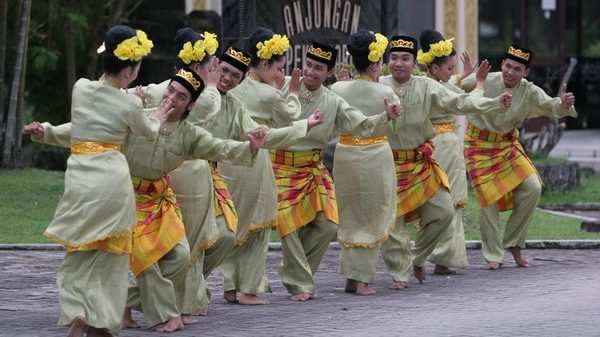 In addition, Hokkien is also still widely used among the Chinese community, especially those living in Pekanbaru, Selatpanjang, Bengkalis, and Bagansiapiapi. The Hokkien spoken in Riau is known as Riau Hokkien, which is mutually intelligible to the Hokkien spoken by the Malaysian Chinese in Johor, southern Malaysia and Singapore. They are both derived from the Quanzhou dialect of Hokkien that originated from the city of Quanzhou in Fujian. Riau Hokkien is slightly mutually unintelligible with Medan Hokkien spoken in Medan since the latter is derived from the Zhangzhou dialect of Hokkien that originated from Zhangzhou, also in Fujian. Presently, Riau Hokkien has incorporated many words from the local language such as Malay and Indonesian
Javanese is spoken by the Javanese people who migrated to the province. While several varieties of Batak is spoken by Batak immigrants from North Sumatra.
In addition, Hokkien is also still widely used among the Chinese community, especially those living in Pekanbaru, Selatpanjang, Bengkalis, and Bagansiapiapi. The Hokkien spoken in Riau is known as Riau Hokkien, which is mutually intelligible to the Hokkien spoken by the Malaysian Chinese in Johor, southern Malaysia and Singapore. They are both derived from the Quanzhou dialect of Hokkien that originated from the city of Quanzhou in Fujian. Riau Hokkien is slightly mutually unintelligible with Medan Hokkien spoken in Medan since the latter is derived from the Zhangzhou dialect of Hokkien that originated from Zhangzhou, also in Fujian. Presently, Riau Hokkien has incorporated many words from the local language such as Malay and Indonesian
Javanese is spoken by the Javanese people who migrated to the province. While several varieties of Batak is spoken by Batak immigrants from North Sumatra.
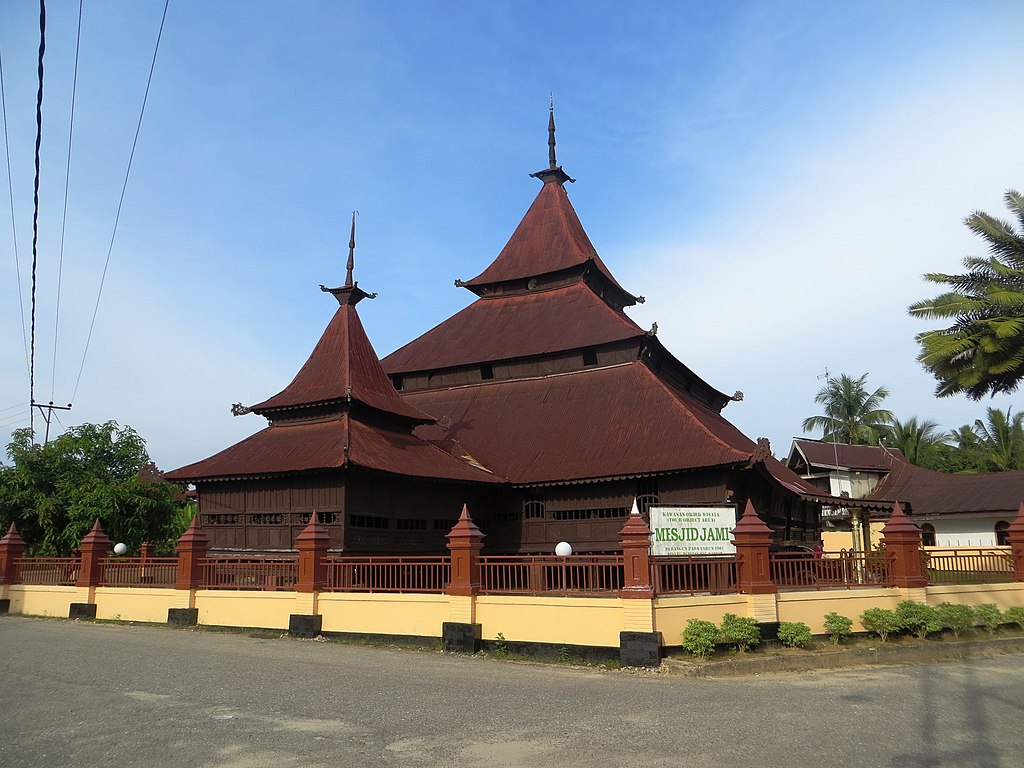 Religion
Religion
Based on the composition of the population of Riau which is full of diversity with different socio-cultural, linguistic and religious backgrounds, it is basically an asset for the Riau region itself. The religions embraced by the inhabitants of this province are very diverse, including Islam, Protestantism, Catholicism, Hinduism, Buddhism, and Confucianism.
As of 2015, Islam is the dominant religion in the province, forming 86.87% of the total population. Islam is generally adhered by the ethnic Malays, Javanese, Minangkabau, Banjars, Bugis, Sundanese and some Batak sub-group.
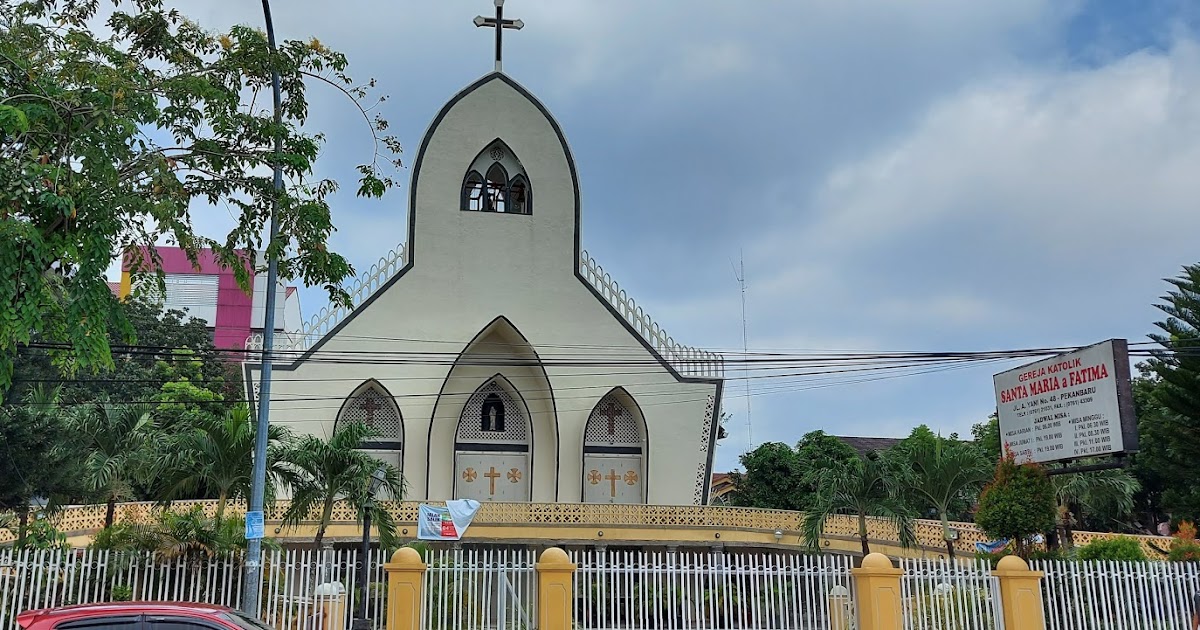 Protestantism forms the second-largest religion, forming as many as 9.74%, while Catholics forms as many as 1.02%, Most of the people who adhered to Protestantism and Catholicism are from Batak ethnic groups (specifically Batak Toba, Karo and Simalungun), Nias, Chinese and residents from Eastern Indonesia.
Protestantism forms the second-largest religion, forming as many as 9.74%, while Catholics forms as many as 1.02%, Most of the people who adhered to Protestantism and Catholicism are from Batak ethnic groups (specifically Batak Toba, Karo and Simalungun), Nias, Chinese and residents from Eastern Indonesia.
Then there is Buddhism which forms around 2.28% of the total population and Confucianism which forms around 0.07% of the total population. Most of the Buddhist and Confucianism are of ethnic Chinese origin. Lastly, about 0.01% of the total population embrace Hinduism, mostly are Balinese and Indonesians of Indian descent.
Culture
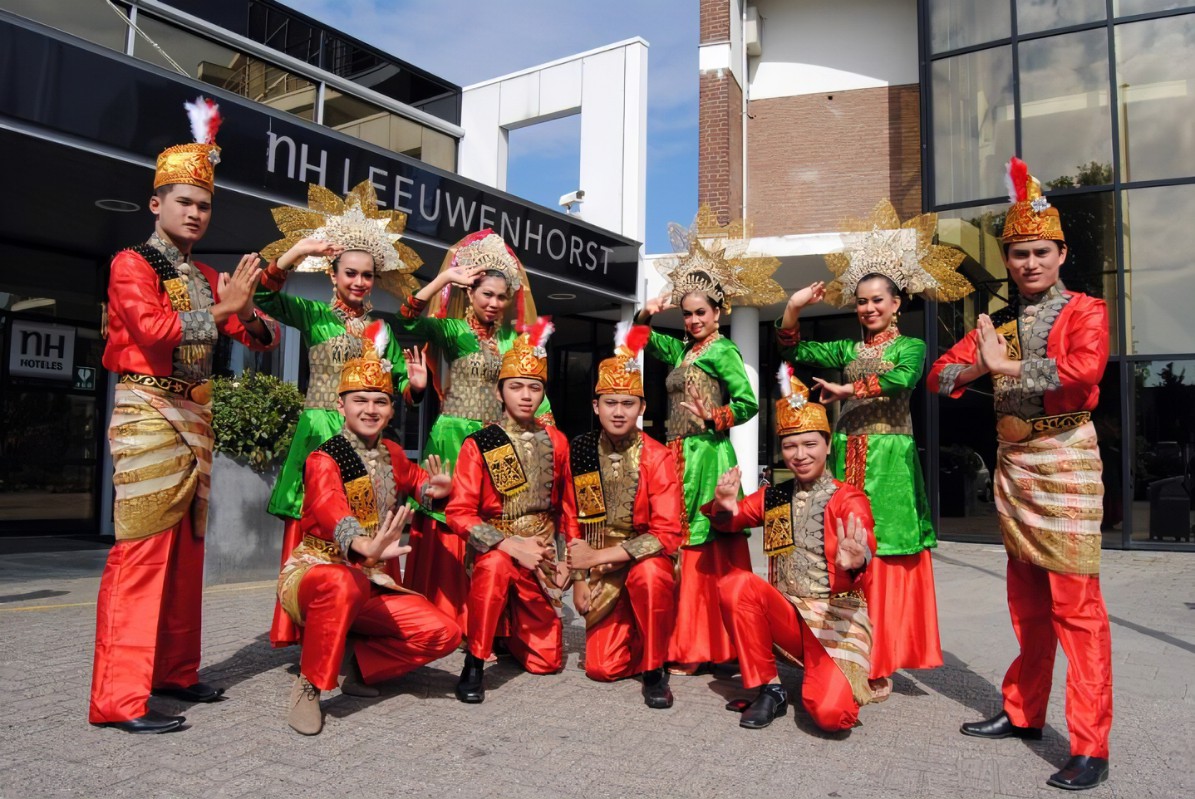 As Riau is the homeland of the Malays, the customs and cultures of Riau is mostly based on Malay customs and cultures.
Every Malay family lives in their own house, except for new couples who usually prefer to stay at the wife’s house until they have their first child. Therefore, their sedentary patterns can be said to be neat. The nuclear family they called genitals generally built a house in the neighborhood where the wife lived. The principle of lineage or kinship is more likely to be parental or bilateral.
As Riau is the homeland of the Malays, the customs and cultures of Riau is mostly based on Malay customs and cultures.
Every Malay family lives in their own house, except for new couples who usually prefer to stay at the wife’s house until they have their first child. Therefore, their sedentary patterns can be said to be neat. The nuclear family they called genitals generally built a house in the neighborhood where the wife lived. The principle of lineage or kinship is more likely to be parental or bilateral.
Kinship is done with a typical local nicknames. The first child is called long or sulung, the second child is ngah/ongah, below him is called cik, the youngest is called cu/ucu. Usually the nickname is added by mentioning the physical characteristics of the person, for example, if the person is dark-skinned and is a cik or a third child, he will be called cik itam.
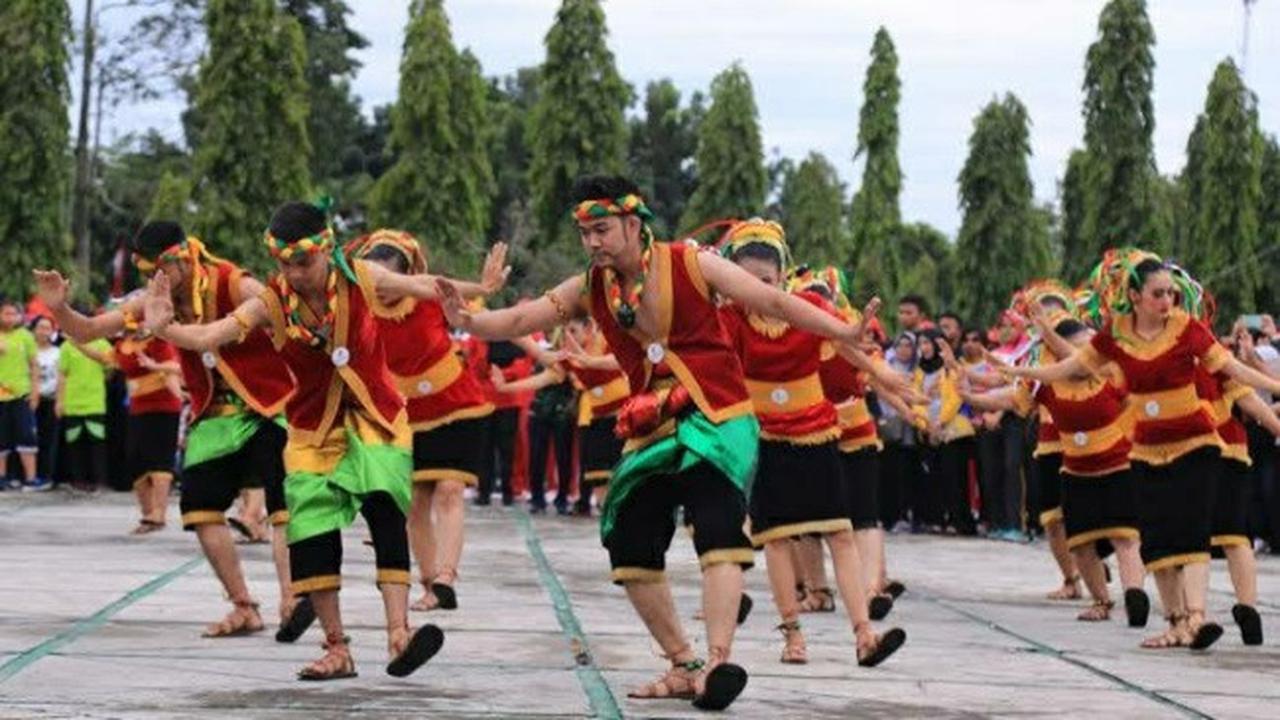 Another example is when the particular person is a first-born and has a short characteristic. he/she will be called ngah undah. But sometimes when greeting people who are unknown or new to them, they can simply greet them with abang, akak, dek, or nak.
Another example is when the particular person is a first-born and has a short characteristic. he/she will be called ngah undah. But sometimes when greeting people who are unknown or new to them, they can simply greet them with abang, akak, dek, or nak.
In the past, Malays also lived in groups according to their ancestral origin, which they called tribes. This group of descendants uses a patrilineal kinship line. But the Riau Malays who lived on the mainland Sumatra partially embraced matrilineal tribalism. There are also those who referthe tribe as a hinduk or a cikal bakal. Each tribe is led by a leader. If the tribe lives in a village, then the head will be referred to as Datuk Penghulu Kampung or Kepala Kampung. Each leader is also assisted by several figures such as batin, jenang, tua-tua dan monti. Religious field leaders in the village are known as imam dan khotib.
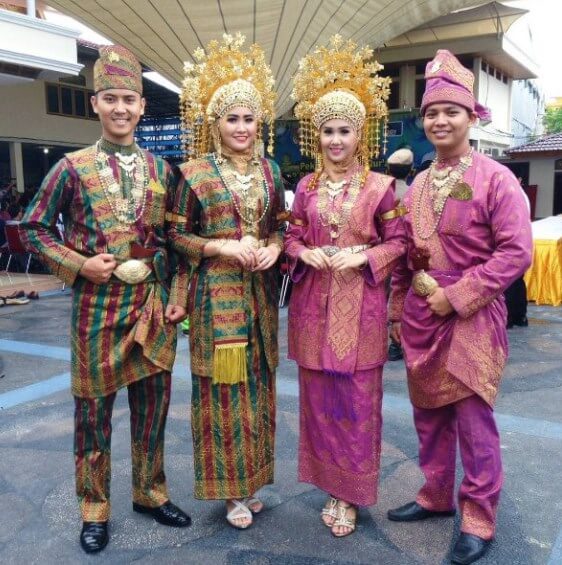 Traditional dress
Traditional dress
In Malay culture, clothes and textiles are very important and it signify beauty and power. The Hikayat-Hikayat Melayu mentioned the importance of textile in Malay culture. The history of the Malay woven industry can be traced back to the 13th century when trade routes in the East are rapidly expanding under the role of the Song dynasty. The description of locally-made textiles and the development of the embroidery industry in the Malay Peninsula is expressed in several Chinese and Indian records. Among the famous Malay textiles that still exist today are Songket and Batik.
The earliest Malay traditional dress was concise, the woman wearing a sarong that covered the lower body to the chest while the man dressed in short, sleeveless or shorts, with shorts down to the knee level. However, when trade with the outside world flourishes, the way in which the Malay dress begins to gain external influence and becomes more sophisticated. The 15th-century is the peak of the power of the Malacca Sultanate. As told in the Malay Annals, this is where traditional Baju Melayu clothing is created.
 The strong Islamic influence has transformed the way of dressing the Malays later on features that are matching with Islamic laws. The classic Malay general attire for men consists of shirts, small sacks, sarongs worn at the waist, and a tanjak or tengkolok worn on the head. It is common for a Malay warrior to have a keris tucked into the front fold of sarong. The Malay version of the early women’s clothing is also more loose and long. However, it was subsequently renewed and popularized by Sultan Abu Bakar of Johor in the late 19th century, into the form of Baju Kurung used today.
The strong Islamic influence has transformed the way of dressing the Malays later on features that are matching with Islamic laws. The classic Malay general attire for men consists of shirts, small sacks, sarongs worn at the waist, and a tanjak or tengkolok worn on the head. It is common for a Malay warrior to have a keris tucked into the front fold of sarong. The Malay version of the early women’s clothing is also more loose and long. However, it was subsequently renewed and popularized by Sultan Abu Bakar of Johor in the late 19th century, into the form of Baju Kurung used today.
However, Riau also has some traditional dress that cannot be found in other parts of the Malay world. The Riau traditional dress is not only used for certain occasions. But some of these traditional clothes are functioned as everyday clothes, one of which is daily clothing for children. The children’s daily wear used is divided into two types, namely clothes for boys and clothes for girls. For boys’ clothes in the customs of the Riau people, they are called baju monyet (Monkey clothes).
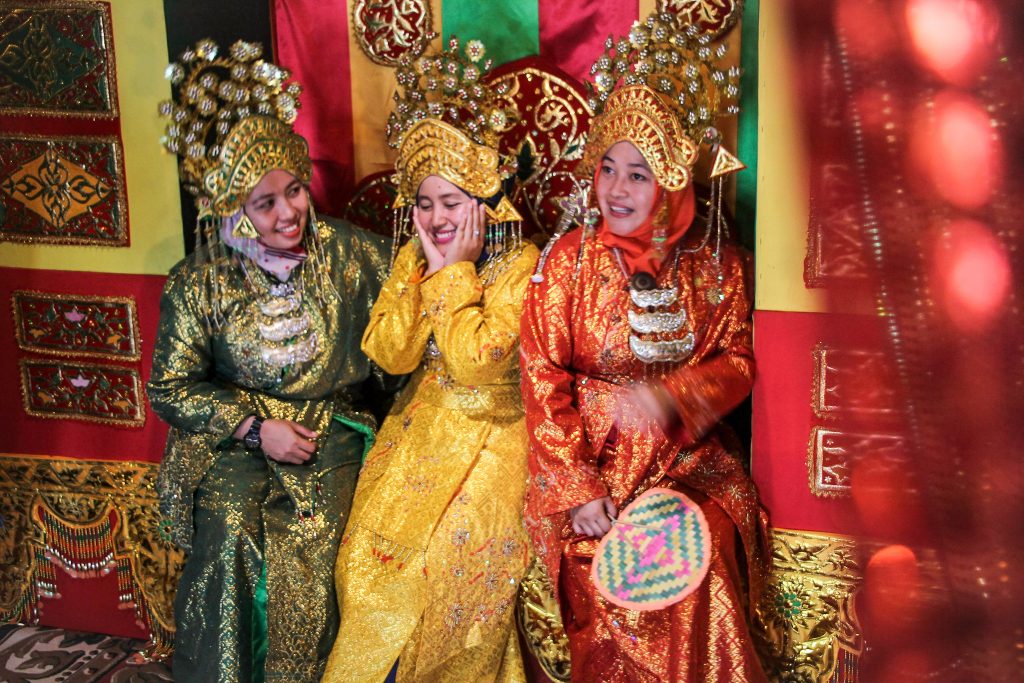 This outfit is combined with the type of trousers that are responsible, and complete with a kopiah or rectangular shaped cloth as a head covering. While for everyday clothes for girls is Baju Kurung with floral motifs. This outfit is combined with a wide skirt with a hijab or tudong. The daily clothes of Riau people are commonly used for reciting or for studying.
This outfit is combined with the type of trousers that are responsible, and complete with a kopiah or rectangular shaped cloth as a head covering. While for everyday clothes for girls is Baju Kurung with floral motifs. This outfit is combined with a wide skirt with a hijab or tudong. The daily clothes of Riau people are commonly used for reciting or for studying.
For the people of Riau who are adults, they wear distinctive clothing and are also very close to religious and cultural values. For males, they use clothing called Baju Kurung Cekak Musang. Namely, clothes like Muslim clothing are combined with loose trousers. This shirt is used together with sarong and kopiah. For Malay women, they can wear 3 different types of clothing, namely the Baju Kebaya Pendek, Baju Kurung Laboh, and Baju Kurung Tulang Belut. The different clothes are used in conjunction with a shawl cloth that is used as a head covering. In addition, women’s clothing can also be combined with a hijab or tudong.
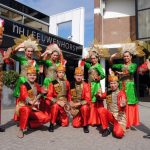
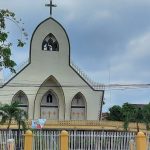
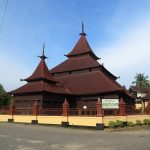



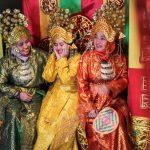
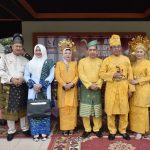
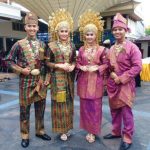
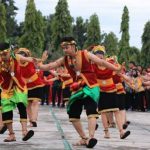












 Traditional house
Traditional house
In traditional Malay societies, the house is an intimate building that can be used as a family dwelling, a place of worship, a heritage site, and a shelter for anyone in need. Therefore, traditional Malay houses are generally large. In addition to the large size, the Malay house is also always in the form of a rumah panggung or stage house, facing the sunrise. The types of Malay houses include residential houses, offices, place of worship and warehouses. The naming of the houses is tailored to the function of each building. In general, there are five types of Riau Malay traditional houses, namely the Balai Salaso Jatuh, Rumah Melayu Atap Lontik, Rumah Adat Salaso Jatuh Kembar, Rumah Melayu Lipat Kajang and Rumah Melayu Atap Limas Potong.
The Balai Salaso Jatuh is usually used for consensus decision-making and other activities. It is rarely used for private homes. In accordance with the functions of the Balai Salaso Jatuh, this building has other local names such as balai panobatan, balirung sari, balai karapatan, etc. Presently, the function of this building has been replaced by a house or a mosque. The building has an alignment, and has a lower floor than the middle room. In addition, Balai Salaso Jatuh is also decorated with various carvings in the form of plants or animals. Each carving in this building has its own designation.
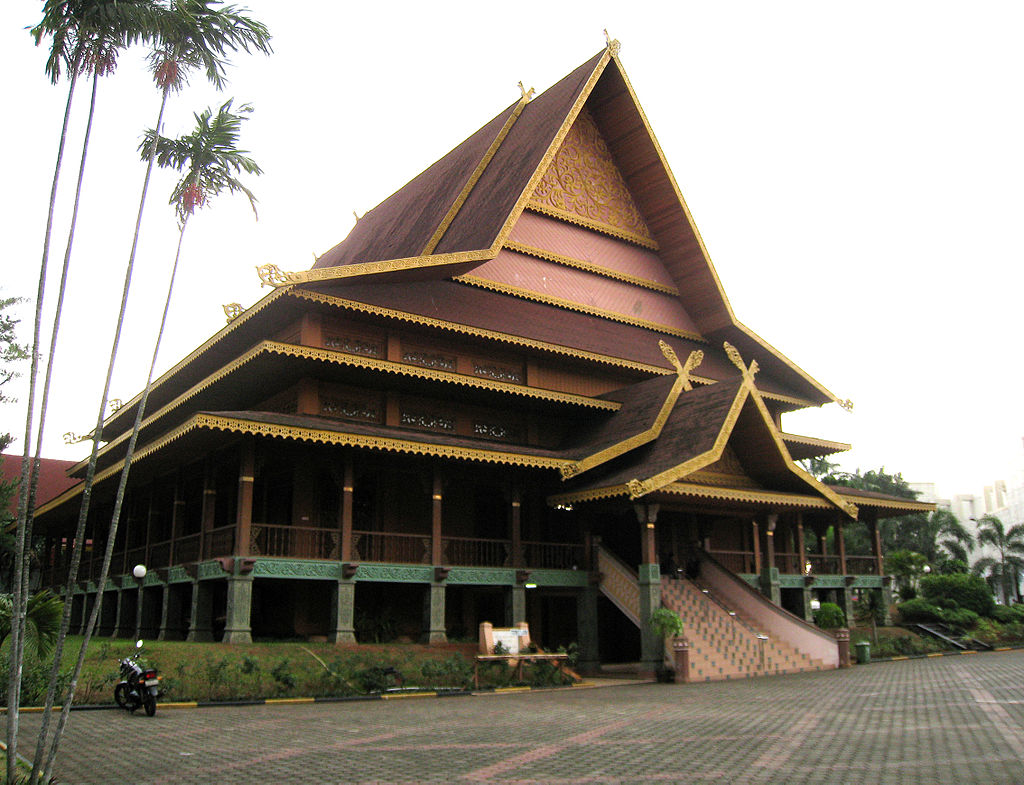 Rumah Melayu Atap Lontik or Lontiok House can usually be found in Kampar Regency. It is called so because this house has a decoration on the front wall of the house in the form of a boat. When viewed from a distance, this house will look like boat houses that are usually made by the local residents. Besides being referred to as lancing and pancalang, this traditional house is also called lontik, since this house has a roof paring that is soaring upwards.
Rumah Melayu Atap Lontik or Lontiok House can usually be found in Kampar Regency. It is called so because this house has a decoration on the front wall of the house in the form of a boat. When viewed from a distance, this house will look like boat houses that are usually made by the local residents. Besides being referred to as lancing and pancalang, this traditional house is also called lontik, since this house has a roof paring that is soaring upwards.
This house is heavily influenced on the architecture of the Minangkabau Rumah Gadang, since Kampar Regency is directly adjacent to the province of West Sumatra. A unique feature of this traditional house is that it has five stairsteps. The reason they chose the number five was because this is based on the Five Pillars of Islam. The shape of the pillars in this house also varies, there are rectangles, hexagons, heptagon, octagon and triangles. Each type of pole contained in this traditional house has meaning believed by the people of Riau. A rectangular pole can be interpreted as four corners of the wind, just like an octagon, and the hexagon symbolizes the number of pillars of Islam.
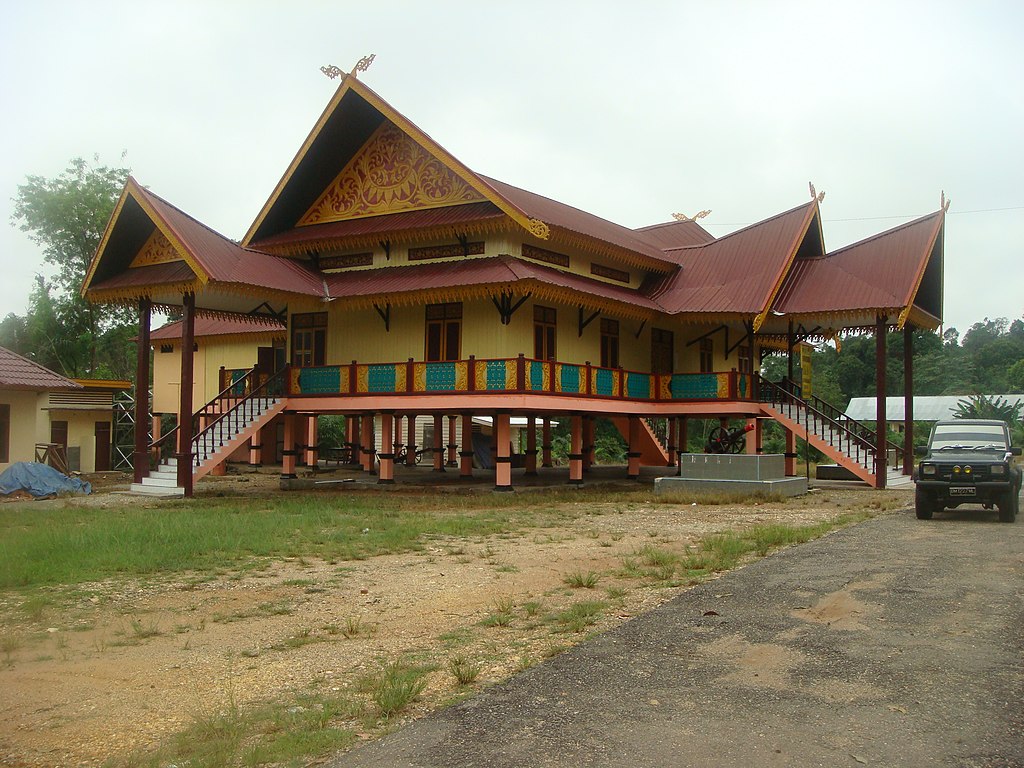 Rumah Salaso Jatuh Kembar was declared an icon and symbol of the province of Riau. The architecture of this house is similar to the Balai Salaso Jatuh, but this house tends to be used for private homes.
Rumah Salaso Jatuh Kembar was declared an icon and symbol of the province of Riau. The architecture of this house is similar to the Balai Salaso Jatuh, but this house tends to be used for private homes.
Rumah Melayu Lipat Kajang can usually found in the Riau Islands and the coastal part of Riau. It is called Lipat Kajangbecause the roof of this house has a shape resembling the shape of a boat. The top of this building is curved upwards and is often referred to lipat kejang or pohon jeramban by the locals. This traditional house is rarely or even no longer used by Riau residents. One reason for the loss of this culture is because of the increasing influence of western architecture, and people consider their building forms to be simpler and easier to build.
Rumah Melayu Atap Limas Potong is a Malay traditional house that can usually be found in mainland Riau, but rarely in the Riau Islands. This house has a roof that is shaped like a cut pyramid. Like other Riau traditional houses, this house is also included in the rumah panggung group. The stage of this house has a height of about 1.5 meters above the ground. The size of the house depends on the ability and desires of the owner.
Kabupaten & Kota

Kuantan Singngi
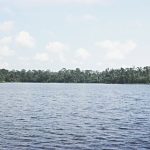
Kepulauan Meranti
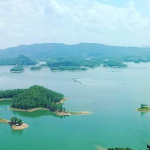
Kampar
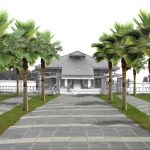
Indragiri Hulu

Indragiri Hilir
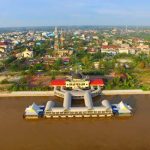
Bengkalis
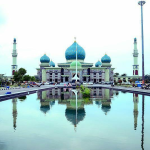
Pekanbaru
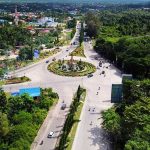
Dumai
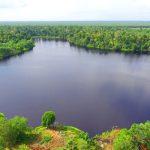
Siak
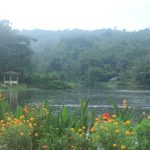
Rokan Hulu
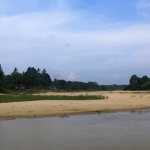
Rokan Hilir

Pelalawan

Kuantan Singngi

Kepulauan Meranti

Kampar

Indragiri Hulu

Indragiri Hilir

Bengkalis

Pekanbaru

Dumai

Siak

Rokan Hulu

Rokan Hilir

Pelalawan
 Cuiisine
Cuiisine
The cuisine of Riau is heavily influenced by Malay and Minangkabau cuisines, and also slightly influenced by Chinese and Javanese cuisines. The cuisine in Riau is somewhat similar to the cuisine in the Malay Peninsula across the Strait of Malacca.
Traditional Malay cuisine in Riau has much in common with other Malay cuisines in other part of the Malay world and Sumatran cuisine which generally uses spices and coconut milk to produce spicy, fatty and thick curry.. Most dishes use basic ingredients of fish, from pangasius, mystus, anchovy, Spanish mackerels, rays, and prawns, and often uses buffalo or ox meat. Additional ingredients commonly used are Belacan. Almost every Malay dish is served with white rice or with nasi lemak and is usually eaten using hands.
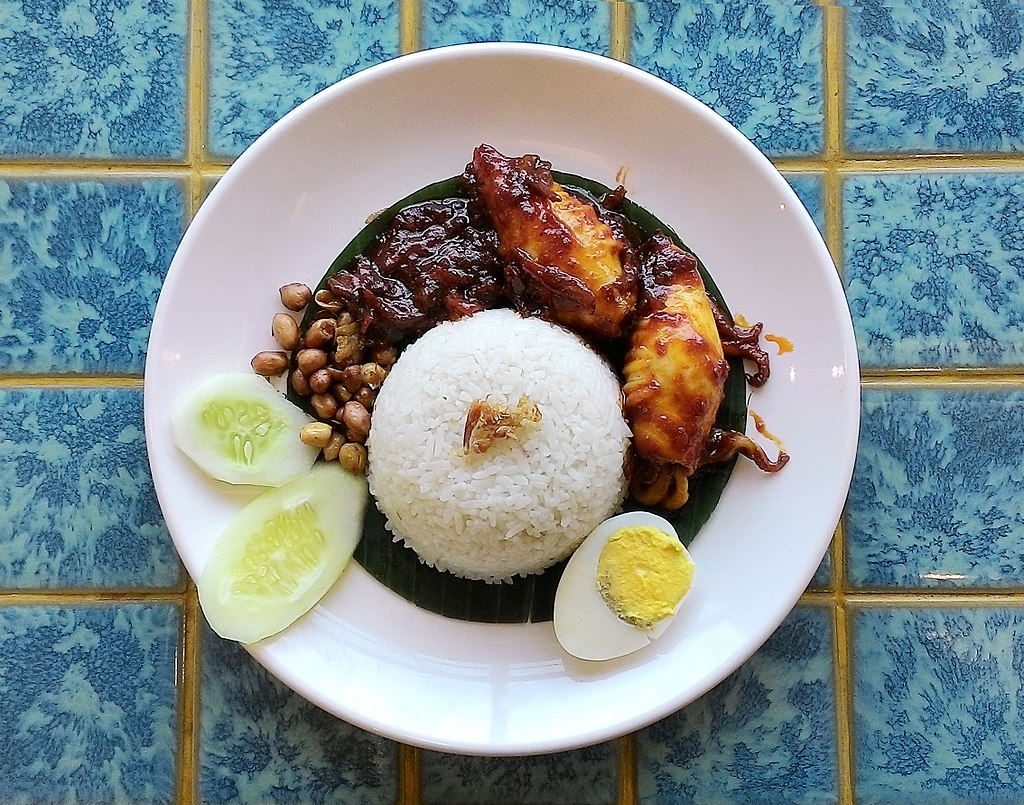 Nasi Lemak is a typical Riau food in the form of rice cooked with coconut milk to provide a savory flavor and fragrant aroma. Nasi Lemak is generally served with side dishes such as eggs, fried anchovy, chili sauce, cucumber slices and other side dishes. This nasi lemak is easily found in stalls and restaurants in Pekanbaru. In archipelagic region like Riau Islands province of Indonesia, usually seafood are used to accompany nasi lemak, such as ikan bilis (anchovy), ikan tamban (Sardinella longiceps), ikan selar kuning (Selaroides leptolepis), sotong or cumi-cumi (squid) or small prawns.
Nasi Lemak is a typical Riau food in the form of rice cooked with coconut milk to provide a savory flavor and fragrant aroma. Nasi Lemak is generally served with side dishes such as eggs, fried anchovy, chili sauce, cucumber slices and other side dishes. This nasi lemak is easily found in stalls and restaurants in Pekanbaru. In archipelagic region like Riau Islands province of Indonesia, usually seafood are used to accompany nasi lemak, such as ikan bilis (anchovy), ikan tamban (Sardinella longiceps), ikan selar kuning (Selaroides leptolepis), sotong or cumi-cumi (squid) or small prawns.
The Riau islands traditional nasi lemak is quite similar to Malaysian version; it comes as a platter of coconut rice wrapped in banana leaf, with cucumber slices, small dried anchovies (ikan bilis), roasted peanuts, hard boiled egg, and hot spicy sauce (sambal). The Riau islands version however, comes with an addition of small fish locally known as ikan tamban, usually fried with sambal chili paste and very crispy, the whole fish is edible. Prawns and squids are also commonly stir-fried in chili paste as sambal udang or sambal cumi.
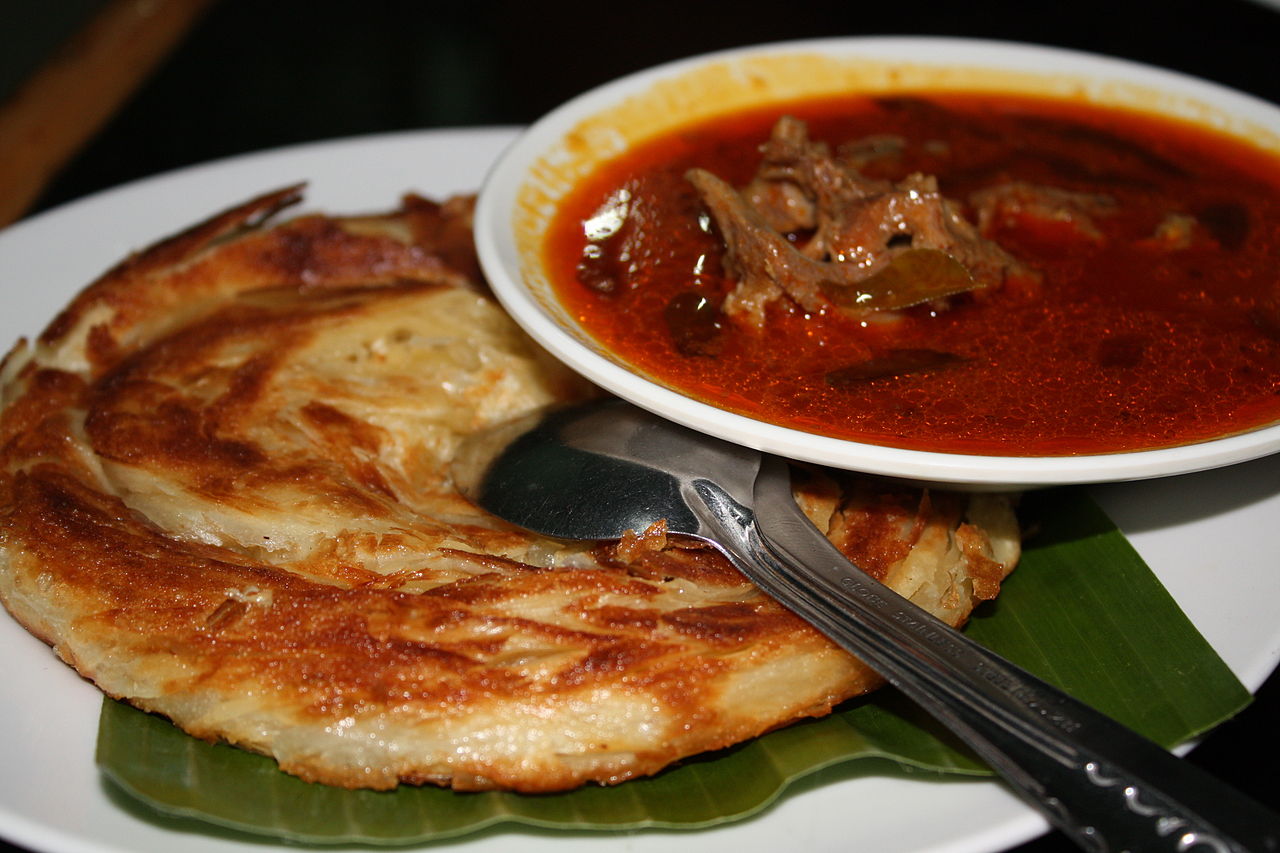 In Indonesia, nasi lemak is often sprinkled with bawang goreng (crispy fried shallot granules). In Pekanbaru city in Sumatran province of Riau however, freshwater river fishes are commonly used as lauk to accompany nasi lemak. The freshwater fishes includes ikan selais (Kryptopterus cryptopterus) and ikan patin (Pangasius). Other fish such as ikan lomek (Harpadon nehereus) is also commonly used. These fishes are usually cooked in Minang style lado ijo (green chili pepper), minced and fried as perkedel ikan, or just plainly fried.
In Indonesia, nasi lemak is often sprinkled with bawang goreng (crispy fried shallot granules). In Pekanbaru city in Sumatran province of Riau however, freshwater river fishes are commonly used as lauk to accompany nasi lemak. The freshwater fishes includes ikan selais (Kryptopterus cryptopterus) and ikan patin (Pangasius). Other fish such as ikan lomek (Harpadon nehereus) is also commonly used. These fishes are usually cooked in Minang style lado ijo (green chili pepper), minced and fried as perkedel ikan, or just plainly fried.
The Gulai Ikan Patin (Catfish soup) has a very delicious and powerful taste and it can be easily be found around Pekanbaru. Gulai Ikan Patin is a typical Pekanbaru food that has a deep yellow sauce to soak the pieces of catfish. The people of Riaum especially Pekanbaru, generally also consume other ingredients other than the catfish. There are sidedishes accompanying the dish, such as boiled yams, leaf tops and more. Gulai Ikan Patin is usually cooked with the etlingera elatior to enhance the flavouring.
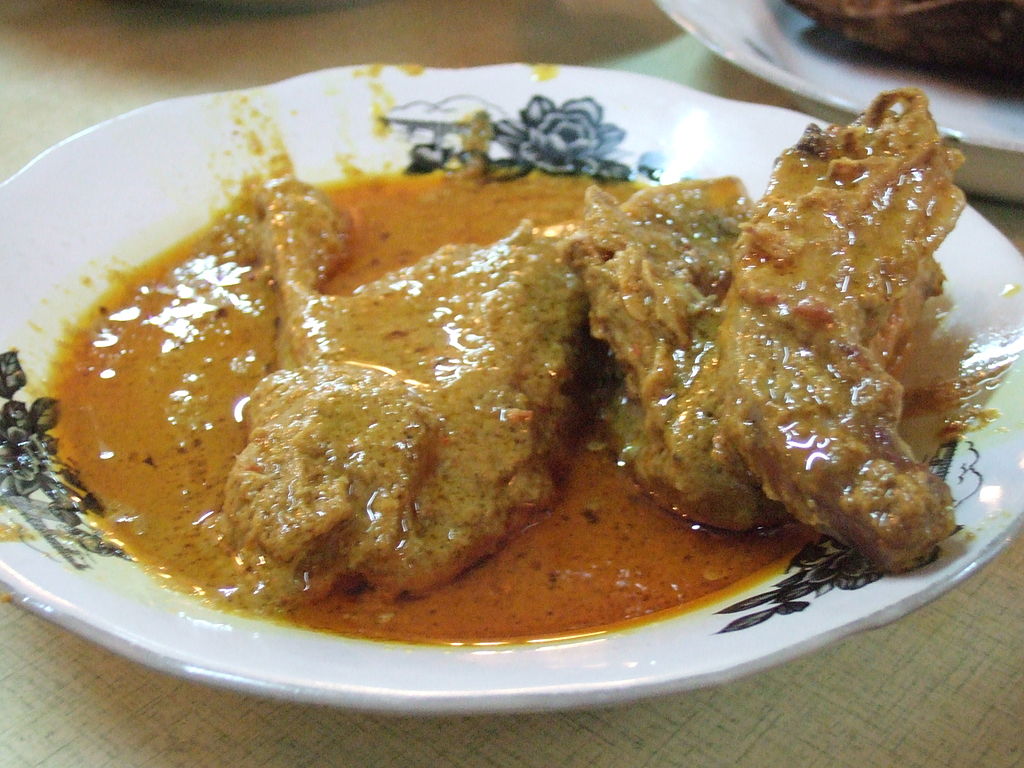 Asam pedas (or Asam padeh in Minangkabau) is a Malay-Minangkabau dish that can be found in Riau and the surrounding area.. It is a type sour and spicy fish stew dish. The main ingredients in asam pedas are usually seafood or freshwater fish. They are cooked in asam (tamarind) fruit juice with chilli and spices. The cooking process involves soaking the pulp of the tamarind fruit until it is soft and then squeezing out the juice for cooking the fish. Asam paste may be substituted for convenience. Vegetables such as terong or brinjals (Indian eggplants), okra and tomatoes are added. Fish and seafood – such as mackerel, mackerel tuna, tuna, skipjack tuna, red snapper, gourami, pangasius, hemibagrus or cuttlefish – either the whole body or sometimes only the fish heads are added to make a spicy and tart fish stew. It is important that the fish remain intact for serving so generally the fish is added last. In the Riau region, the most common fish used in asam pedas is tongkol (mackerel tuna).
Asam pedas (or Asam padeh in Minangkabau) is a Malay-Minangkabau dish that can be found in Riau and the surrounding area.. It is a type sour and spicy fish stew dish. The main ingredients in asam pedas are usually seafood or freshwater fish. They are cooked in asam (tamarind) fruit juice with chilli and spices. The cooking process involves soaking the pulp of the tamarind fruit until it is soft and then squeezing out the juice for cooking the fish. Asam paste may be substituted for convenience. Vegetables such as terong or brinjals (Indian eggplants), okra and tomatoes are added. Fish and seafood – such as mackerel, mackerel tuna, tuna, skipjack tuna, red snapper, gourami, pangasius, hemibagrus or cuttlefish – either the whole body or sometimes only the fish heads are added to make a spicy and tart fish stew. It is important that the fish remain intact for serving so generally the fish is added last. In the Riau region, the most common fish used in asam pedas is tongkol (mackerel tuna).
Aside from the main dish, typical Riau restaurant also serves local snacks. An example is the roti jala. Roti jala typical Riau food which is influenced by Malay culture. Roti jala is a dish that is generally present at large parties such as weddings. This food is made from the basic ingredients of flour which, after being cooked, will be served with a spill of durian sauce for those who like sweet foods. Aside from being served with sauce, roti jala is also commonly eaten with curry chicken, mutton or beef. Roti jala has a triangular shape that is produced from a mold. Although it is usually white in color, some creative cooker also gives food coloring such as pandanus to make the roti jala green in color. Roti cane is a typical Riau food. This bread has much in common with roti pratha in India and Singapore aside from the taste and eating method.
